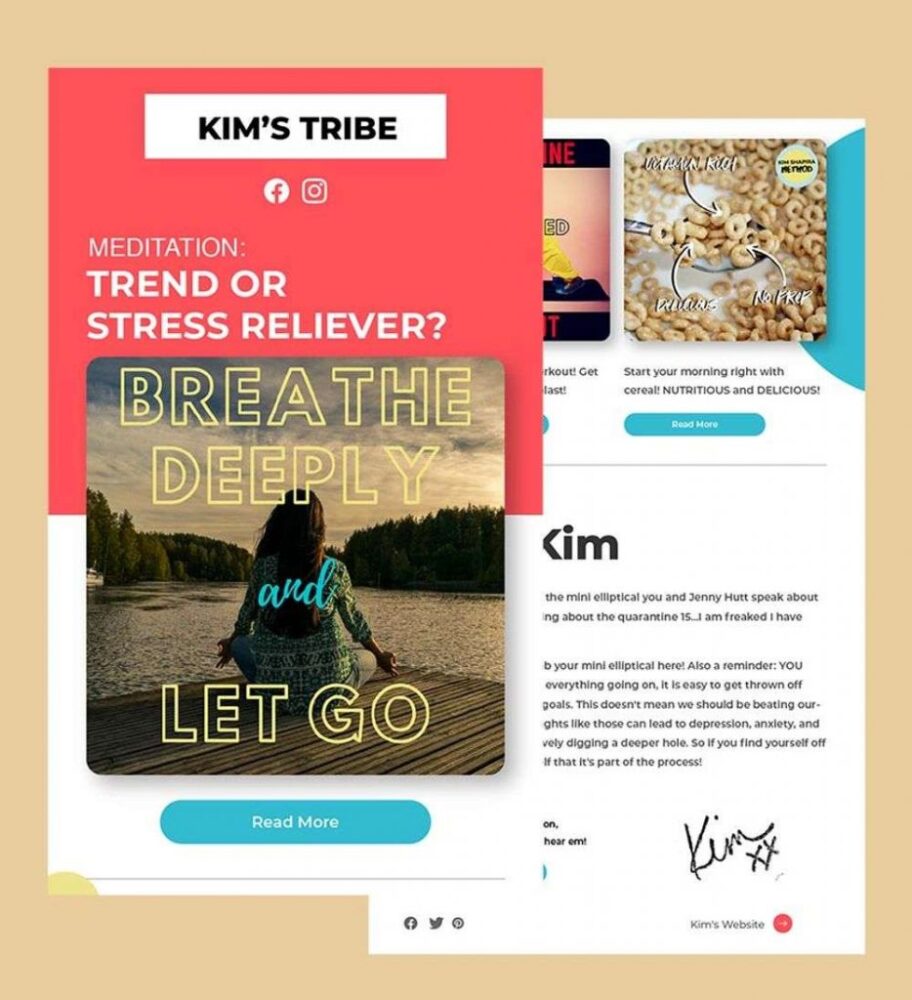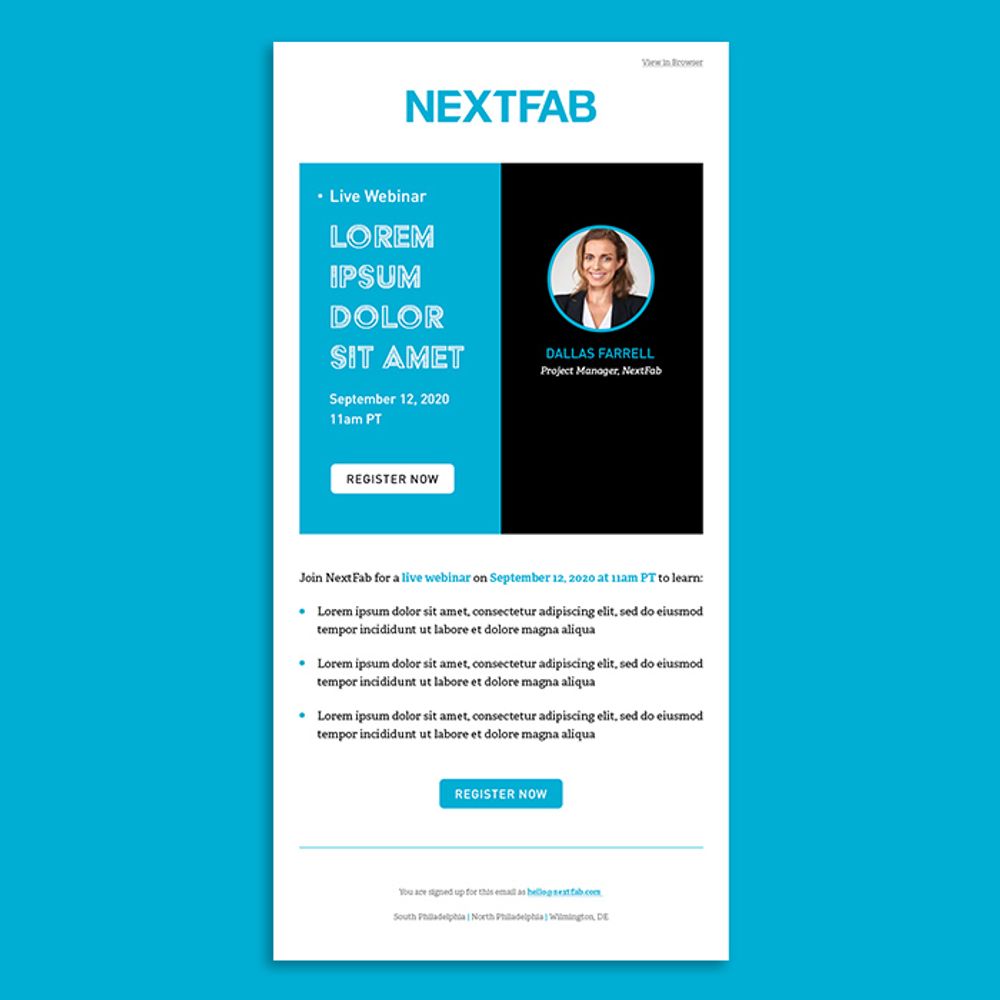
Whether it’s to attract students or motivate current ones, universities put a premium on marketing. After all, education isn’t exactly cheap and higher education institutions need to let the community know how their university experience is worth the price.
Many of our university clients at Penji know just how competitive higher ed marketing could be. So, they ask us to create the best and most creative visuals to appeal to their younger audience.
If you’re looking for ways to boost your education branding, here are some of the best marketing strategies for universities.
But before we tackle these proven marketing strategies, here are some things to note when promoting your university.
How do you market a university?
The answer depends on what resources your university has available for marketing. Social media, search campaigns, and digital ads are some of the best ways to reach prospective students. However, universities also use traditional mail and meet high school students in face-to-face events.
If you’re not sure yet which one works for you, here are some case studies to look at to inspire your marketing campaigns.
- Indiana University – They wanted to increase online education program leads through Facebook. There, they ran image ads and placements. Results: 35% reduced CPC for paid media and 6% information requests by leads.
- Northcentral University – The university wanted to increase application rates. With the help of Level Agency, they ran ads and landing pages. With that, they had a 25% growth in applications and 351% application volume.
- University of Kent – The university aimed to raise application rates during a Clearing period. By partnering with Arke, they enhanced their branding through social and search campaigns. Results: 40% more clicks and 165% more impressions.
Now that we’ve tackled that, learn more about marketing strategies for universities below.
What are the 4 types of marketing strategies?
There are more than four types of marketing strategies that universities can use. As you’ll see below, more than 10 marketing strategies can help universities promote their institution.
What marketing strategies do universities use?
Universities don’t limit themselves by using one or two marketing strategies. There’s an in-depth discussion below, but here are the most commonly executed strategies:
- Social media
- User-generated posts
- Branding
- Student-focused marketing
- Video marketing
- Data-based marketing
- Class enrollment promotions
- SEO
- Diversity marketing
- Visual data marketing
- Paid traffic
- Webinars
- Downloadable guides
- Email marketing
15 best marketing strategies for universities
1. Social Media

Prior to social media, teenagers depended on direct mail to learn about options after high school. When it feels like every college in the country is sending a letter, it feels impersonal to prospective students. The solution is moving forward and reaching them through social media. Students have moved online, and it’s important for your college to follow suit.
Here are a few pointers to keep in mind:
- The most popular social media platform varies by generation and knowing where to place your marketing is key.
- What was popular ten years ago no longer has the same user traffic. Make sure your research is updated.
- Once you determine the best social platform, gather a following of your current, prospective, and alumni students. These people will aid in finding how your school may already appear on social media. From there, assess if you want to appear that way and act accordingly.
Enhance your social media marketing by posting engaging and shareable graphics from Penji.
[in_content_ads gallery=”logos” logo=”on” title=”Need graphic design help?” subtitle=”Try Penji’s Unlimited Graphic Design and get all your branding, digital, print, and UXUI designs done in one place.” btntext=”Learn More” btnlink=”https://penji.co”]
2. User-generated posts
User-generated posts are a similar strategy to focusing on social media but executed differently long-term. Once you know what platforms your students are using, check out what they’re saying about your university. This can determine how your school is seen from an outsider’s perspective. You know what you want your image to be, but does the student body agree?
Engaging the population is the best strategy for creating user-generated content. Create a hashtag that’s generic but flexible to variations. This reminds users it’s still your school, but when it’s updated to something prevalent with the university, users know it’s a special occasion to get involved with.
3. Define your brand image

Every school has a brand. It’s how the university is viewed by outsiders. Each one has a different approach to its brand, and you should strive to stand out among others.
To define your brand image, establish how you want to be seen. Your college should have a ‘voice’. This ‘voice’ turns it into a person, something people can use to simplify their thoughts of your school.
Keep these tips in mind when defining your brand image:
- Using consistent branding across different mediums establishes what your brand is all about.
- That said, if there’s a clear divide between a billboard advertisement and a Facebook advertisement’s voice, it creates confusion. It’s as if your college comes off with a split personality.
- It’s difficult to market your school in multiple voices, and defining it helps attract the exact type of students you want.
This could mean re-evaluating your current brand guidelines and updating your university marketing strategy to ensure it’s consistent. Graphic design plays a large role in marketing and shouldn’t be taken lightly. It helps solidify your image as a place of learning for your audiences.
4. Focus on the students
Students are the life of your university. Without them, there wouldn’t be a school. It’s important to remember the importance of them and show appreciation for your population. A university marketing strategy with students at the center targets both current and prospective students.
Take note of these tips when focusing your marketing strategy:
- Incoming students are the toughest to target since all universities compete for their attention. However, it still helps to let these potential freshmen know what’s in store.
- People attend higher education to better themselves, but they also want to feel welcomed.
- A strategy surrounding how hospitable and engaging a school is to its population provides insight to prospective undergraduates. It also reminds current students the professors and staff are there for them. It helps with engagement and participation on campus.
- Promoting events or assistance for them on some multiple channels and platforms is one way to remind them the university cares about them.
5. Video marketing on all platforms

More and more, every social media platform under the sun is leaning into short-form video. Videos can provide quick information for those looking to learn about your university. It also offers a perspective into the school’s personality that doesn’t appear as easily on still posts and pages.
Major video platforms such as YouTube are easily accessible for universities and students to use. Content that might be deemed ‘too busy’ for standard usage can thrive in a video if done correctly. Many schools already use it to show everyday life, classes, and activities. There’s also using the platform to live stream major events like graduation or homecoming.
Unlike other platforms that could restrict word counts or the size of a file, using video is almost unlimited.
6. Statistics
Show the numbers that prove your university is worth attending. There are parents and students who won’t consider a school unless it’s proven to help its population.
Here are points to consider when using numbers in your university marketing strategy:
- A market strategy specifically targeting a certain audience has a higher chance of getting attention.
- If a university actively promotes its high graduation rates, it actively promotes its other departments in the process; It speaks well for the advisors and professors.
- Excellent statistics show that the staff is dedicated to ensuring its students graduate successfully. It’s a strategy that’s reusable every year with updated statistics.
7. Promote sitting in classes before enrolling

For many students, sitting in a lecture is one of the first experiences they have at college. This can be a major change for high school teenagers, to go from smaller class sizes to a lecture of potentially 100+ people. It can benefit incoming undergraduates to sit in on a class and understand a college-style lecture before attending.
Some universities offer this opportunity, but few promote it extensively. This is a great selling point for high school teenagers worried about their future classes and campus life. It doesn’t require an elaborate promotion either; it can even be added to ongoing campaigns like tours and admitted student days.
8. SEO (search engine optimization)
If you accomplish some of these university marketing strategies, students are going to be looking up your school. It’s all irrelevant if your university is not the top of the search when they look it up. Luckily, there are tons of strategies for fixing your Google woes.
Programs such as Google Ad Words and Facebook help ensure that your university’s advertisements appear higher than others. These can be used alongside SEO practices—sprinkling keywords that get lots of searches throughout your website and ensuring that all your content is high quality.
9. Showcase success

For some, knowing what alumni are doing after graduation is important. Just like statistics, this can easily deter or motivate people to apply to your university. It showcases a side of the college not commonly addressed.
Take these into consideration when showcasing success to market your university:
- What are your alumni doing after they’re no longer attending your school? If too many aren’t using their degrees to the fullest potential, it might reflect negatively back on your professors and advisors.
- Not every student is going to become a celebrity in their industry, but they may hold an important position at a respectable organization.
- Find where your alumni are now and highlight their accomplishments. Your university played a role in their success, own it.
10. Embrace Diversity
The college stereotype is attending for four years right out of high school. For many, this isn’t the case. Some may transfer from community colleges or start for the first time ten years after graduating high school.
Every single student has unique backgrounds and experiences that shape how they’ll receive messages. Showcasing the traditional student won’t resonate with all audiences. Why not inspire others by marketing to specific audiences?
It’s possible to create various campaigns surrounding the idea of diversity. Your university may see a high population of adult learners. Promoting your specific population can be encouraging to other adults looking to return to school. Evaluate what distinct population exists at your college and embrace the diversity.
11. Use infographics

According to MIT neuroscientists, the human brain processes visuals in as little as 13 milliseconds. With young people having less patience and a short attention span, it’s a great idea to present info in easy-to-digest infographics.
Here are a few tips to keep in mind when using infographics for your marketing campaign:
- Use infographics to present complex data that may otherwise be too heavy to absorb or too boring to read if presented the traditional way.
- Keep the copy as little as possible and let visuals do most of the “talking.”
- It’s always best to leave this task to a professional. It may look easy enough to do, but creating an infographic without proper training could result in a visual hodge-podge that beats its very purpose.
12. Paid traffic
Though organic social media posts are great tools to reach out to the younger audience, you can’t underestimate the power of paid traffic.
Let’s take ads on Instagram stories, for example. Most users watch IG stories continuously, and placing ads in this feature allows your brand to get a few minutes’ worth of their attention.
When using IG stories as part of your marketing campaign, remember these three factors:
- Value. The audience should feel like they’re getting something out of your ad.
- Urgency. Viewers must feel the need to act on the given info right then and there.
- Uniqueness. The ad should show the viewers how the brand is different from all other universities they’ve seen before.
13. Interactive webinars

Holding interactive webinars is an excellent way to attract students from far and wide even before they step foot on the campus. With webinars, you’re offering potential students valuable info while giving them a teaser of what it feels like to learn within your institution.
Here are a few tips to keep in mind when holding webinars:
- Make sure that the topic is important to potential students. It should provide info they couldn’t get elsewhere.
- Pick speakers or panelists who are relatable to the target market. You can also choose a host within the same age bracket as the audience.
- Make the webinar interactive by having an open forum or holding online games.
14. Downloadable Guides
Going to college is uncharted territory. More often than not, potential students want all the help they can get to prepare for their university experience. Take the opportunity of helping them get ready for college by offering downloadable guides they can read even when they’re offline.
15. Email Marketing
Similar to the previous point, make potential students feel like you’re walking them through their college preparation with email marketing. Create an automated email series that coincides with where they are in their application process.
When sending out emails, the content is just as important as the template. You wouldn’t want to send out emails that look so boring that receivers would just see them as blocks of texts. At Penji, we create email templates that entice the reader to hit the call-to-action button.
Look at our online portfolio to see the email designs we’ve done for our clients. For quick reference, here are some of the email templates created by our designers:




16. AR VR Tours
Offer a more interactive experience for prospective students by providing AR and VR tours. It’s one of the best higher ed marketing strategies because they don’t need to leave the comfort of their home. You can partner with other companies to get this effective strategy up and running. Yale uses this marketing strategy to help you get a preview of what studying at a prestigious institution is like. Additionally, there’s a voiceover narrating about being a university student and the area it’s showcasing.
How to boost your university marketing strategy with Penji
All the best marketing strategies need quality graphic design to ensure their success. Penji offers a great solution for universities looking to scale their marketing in style. The process is as easy as 1-2-3:
- Sign up and create your first request. Choose the plan that’s right for your business and request a design within 5 minutes with our intuitive online platform.
- Receive your first design and give feedback. If you sign up for Penji today, you can see designs tomorrow. It’s that easy. Plus, our point-and-click revision tool lets you make exactly the revisions you need to ensure it’s perfect.
- Download your designs and send them off. Every Penji design comes with source files, so you can save elements for later and edit them to your heart’s content. The best part is, whatever design you need, you’ll never have to go looking again. With 120+ design services, Penji’s got you covered.
Sound too good to be true? Sign up for a demo and discover the Penji difference.
About the author

Erika Solis
Erika is a Content Writer & Marketing Associate for Penji. She has a background in social media marketing, graphic design and copywriting.













